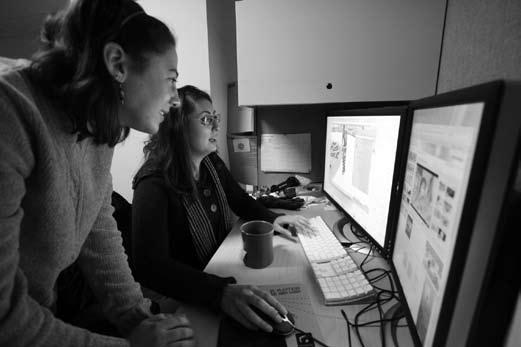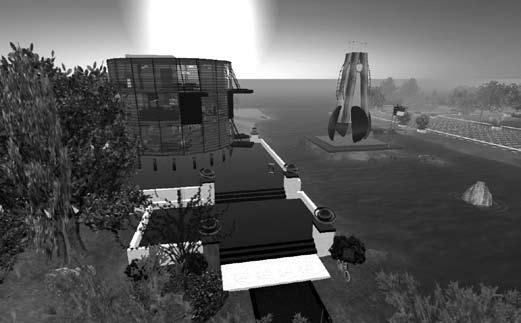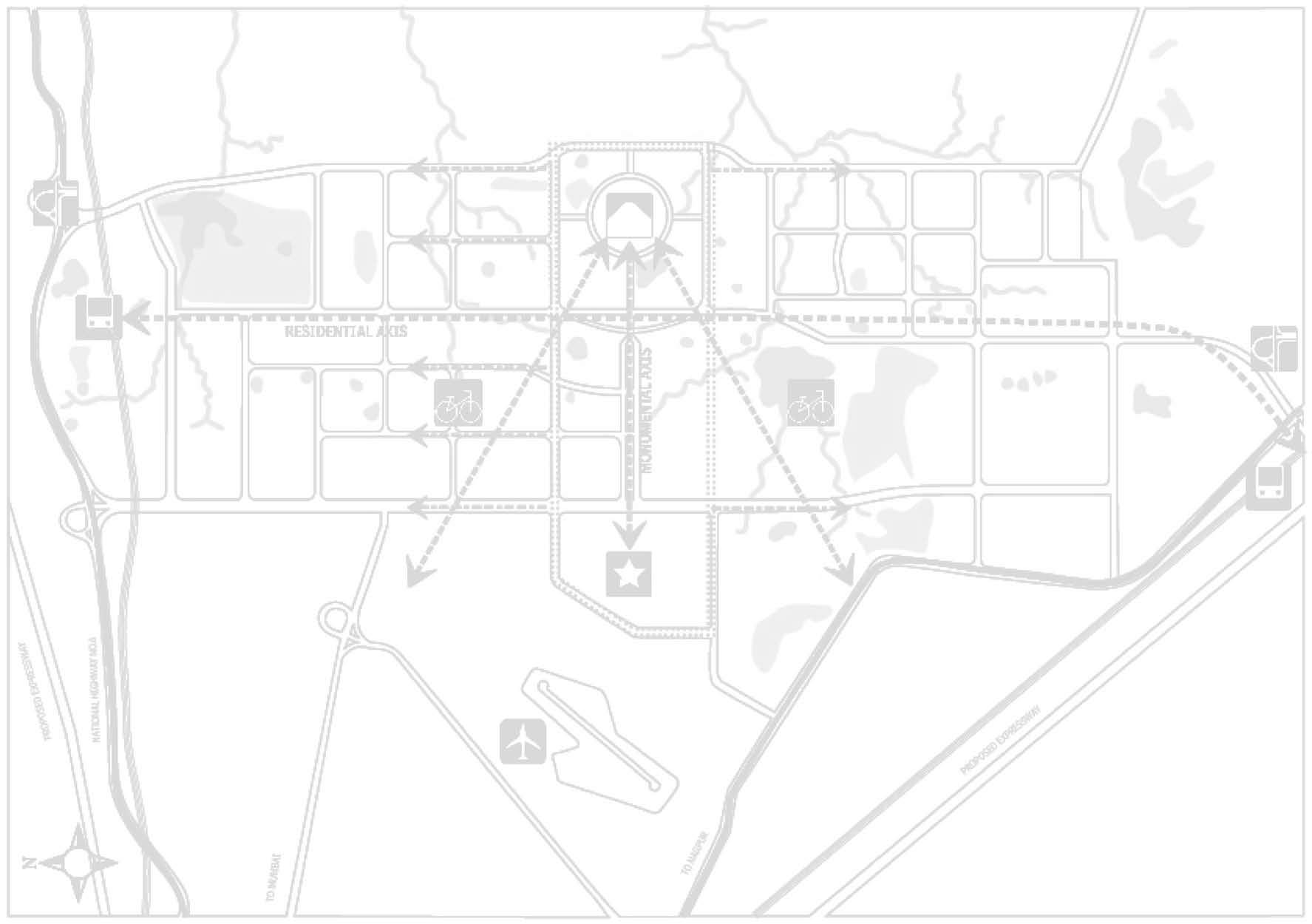
7 minute read
Wolflands Provides NC State Second Life
For students enrolled in distance education classes, one challenge is in having face-to-face interactions with their instructor and other students. At NC State, research being conducted by DELTA (Distance Education and Learning Technology Applications) is exploring how 3-D online learning environments can be used to simulate these interactions and provide other venues for students to hold meetings, engage in role-playing activities, simulate a real-world lab experience, or even allow prospective students to visit the campus and interact with current students—virtually. Linden Lab’s Second Life is one such tool the team at DELTA is exploring. Second Life is a virtual reality universe that is centered in a 3-D visual space. The use ofSecond Life has taken offquickly since its inception in 2003, with Linden Lab CEO Philip Rosedale reporting as many as 57,000 users logged in worldwide at any given time, and nearly 9 million accounts in total. Second Life has its own economy, where users purchase virtual clothing, homes and even pets using Linden Dollars. Popular television shows such as “CSI,” “Law and Order” and “The Office” have all aired episodes involving Second Life. Dozens ofcorporations, including BMW, Ben & Jerry’s and IBM, see the economic potential ofthis budding new technology and have developed a presence in Second Life. More than 100 universities also have a presence in Second Life. Dr. Tom Miller, Vice Provost for DELTA, charged his team with investigating Second Life as part oftheir 3-D Online Learning Environments initiative in June 2007. “3-D virtual environments will have a very significant impact on online learning,” Miller said. “By providing mechanisms for virtual co-location for students and teachers to interact, they add back in a ‘learning community’ aspect which has always been a critical component offace-to-face instruction but has been sorely lacking in traditional online learning environments.” The DELTA Second Life team, with project leadership provided by Amanda Robertson (BGD 1997, MID 2004), has created an island for NC State named Wolflands. Wolflands is available to the public, though the island has not yet been publicized widely. DELTA is building the proofof concept and will continue to maintain and support Second Life during this research phase. “Ifthe university decides that Second Life is a viable production tool, there would need to be resources established and training available for instructors,” said Robertson.

Advertisement
Robertson and the Second Life team are not duplicating NC State’s campus in a photo-realistic way, but decided to make Wolflands a futuristic space—one that embraces the conventions established by Linden Lab. Flight, for example, is the main mode ofnavigation for characters, or avatars, in Second Life. “The approach to defining the design and development in Second Life has been to create an overall open atmosphere that embraced the navigation ofavatars and the unique aspect afforded by this digital space,” said Robertson. “This is a huge collaboration effort amongst several talented people, including several faculty who were already familiar with Second Life and expressed an early interest in researching it with us.” The Second Life team includes Robertson, Ben Huckaby (BAD 2007, CSC 2006), Master ofArt + Design student Saba Kawas, Senior Anni Albers Scholar Ilana Marks and Senior in Communication Studies student Alan Youngblood. The DELTA team is managed by College ofDesign alumnus Michael Cuales (MID 2000), DELTA’s Associate Director of Creative & Multimedia Production Services. D.H. Hill Library and the colleges ofDesign, Education, Engineering, Management and Textiles all have a presence on the Wolflands campus. Saba Kawas has developed the NCSU Library space and is eager to get applications in place to allow avatars to use library services. According to Robertson, “The library will serve as the hub ofthe island and provide resources and information for all who visit.” The DELTA team has worked closely with library staffto develop this space and define what services should be available. Kawas, an international student who majored in architectural engineering for her undergraduate degree, joined the DELTA team in August 2007. She fashioned the furniture in the Learning Commons on Wolflands to replicate the new look ofthe furniture in the real-life library. Kawas has even reproduced the Color Wall—which faces Hillsborough Street in D.H. Hill and was designed by the late Professor of Art + Design Joe Cox—in her rendering ofthe library in Second Life. Youngblood worked on the design for the Brickyard in Second Life, development ofthe asteroids, and is working on the Wolfline ofTomorrow, a tram-like spacecraft that will provide information about services and tours ofWolflands for visitors. Marks suggested the futuristic theme ofNC State. “The application is more readily understandable by younger people ofthe gaming generation,” Marks said. She built the Wolflands version ofBrooks Hall, translating


Top to bottom: College of Education students in Bookhenge; Futuristic view of the Bell Tower; College of Design holds critique in the spacecraft.

the importance ofthe rotunda to College ofDesign students and faculty through a translucent and dynamic structure. Huckaby, who also has an undergraduate degree in computer science and was part ofthe gaming studios while enrolled in the College ofDesign, is the technology lead and manages group rights and permissions for Second Life. Robertson said there are many technology adopters on campus and part ofDELTA’s mission is to extend the reach ofthe faculty through leveraging technology. She sees researching the potential of3-D online learning environments, such as Second Life, as part ofthis mission. Second Life has been well received and many people see the possibilities for education, added Robertson. During the pilot phase of the research, several professors are using the Second Life for distance learning. Each professor uses the tool differently, just like in face-toface classes. Robertson is using Second Life to hold virtual critiques for a design course she teaches in the College ofDesign. Students in the College ofManagement are researching marketing in Second Life to get a perspective on changes in marketing communications over the past 60 years. Wolflands is designed to support several classes and small groups ofstudents, where asteroid classrooms float above the island as private meetings spaces. According to Marks, “The biggest benefit ofSecond Life is better incorporating distance education students into the class experience. Previously, students in distance ed communicated with their peers and professor primarilythrough flat interfaces—Web sites, chat rooms, E-mails. In Second Life, distance education students feel more included in the class because theyhave avatars with which theycan interact. Though the distance between the students, classroom, and professors remains, associating the avatars with real people makes the interaction feel more genuine.” For Robertson, continuous developments in Second Life have opened up new ways to improve the perceived realism ofthe environment. “Part ofthe fun in Second Life is finding ways to improve the experience others have, particularly students and potential students, when they visit Wolflands,” Robertson said. An impressive example is the weather maker; with this feature, you can make it rain or snow in certain areas ofthe island. The Second Life team sees the project’s potential to encourage distance learning among new audiences, embracing the university’s mission of creating innovative learning environments. “[Second Life] could be huge with high school students and a big draw for students interested in mentoring with other students,” said Cuales. He added that DELTA’s responsibility is to continue to investigate technology tools and present the university with options that work best for their varied audiences.
Current NC State colleges with a presence on the island include: College ofEducation College ofManagement College ofEngineering College ofTextiles College ofDesign
Current faculty members working in Second Life are: Cris Crissman, ECI 521: Teaching Literature for Young Adults, College ofEducation Claudia Kimbrough, BUS 465: Integrated Marketing Communications Management, College ofManagement Lynda Aiman-Smith, MBA 530: Managing People in the High Tech Environment, College ofManagement Amanda Robertson, ADN 219: Digital Imaging, College ofDesign The development team includes: Amanda Robertson, DELTA, Senior Multimedia Specialist Ben Huckaby, DELTA, Multimedia Specialist Mike Cuales, DELTA, Associate Director ofCreative & Multimedia Services Saba Kawas, DELTA Intern, Graduate Student in Art + Design in the College ofDesign Ilana Marks, DELTA Intern, Undergraduate Student, Art + Design in the College ofDesign and xxx in the College ofTextiles Alan Youngblood, DELTA Intern, Undergraduate Student, Communication in the College ofHumanities and Social Sciences
Several library staffcollaborators include: Carolyn Argentati, Associate Vice Provost and Deputy Director ofLibraries Josh Wilson, Reference Librarian Kawanna Bright, Instructional Services Librarian










